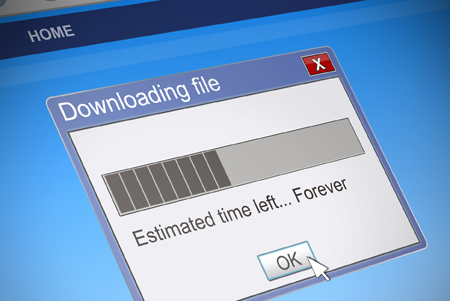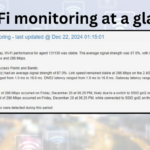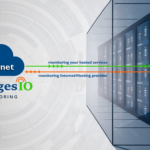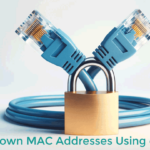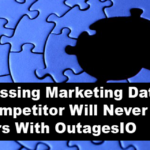If you’re as old as I am, you might remember FTPing large Photoshop files and using up all the Internet bandwidth. “How much longer?” Frank in the next cube over would yell, angry because his “Ask Jeeves” search was taking forever, since your file was hogging all the bandwidth. “Um, it’s at 15 percent, but it’s transferring pretty quickly,” you’d say before running out the door to grab a coffee and bagel, because it was going to take at least 30 minutes, unless the connection dropped. Sorry, Frank.
Bandwidth, AKA speed
Internet bandwidth is usually known as speed by consumers and there is a lot of misunderstanding about how it works. Since there are countless articles on the Internet explaining bandwidth, Wikipedia offers a great page with lots of technical details about bandwidth if that’s what you are actually looking for. I’ll try to explain it in non technical terms.
Bandwidth is measured in bits, kilobits, megabits, gigabits and so on. This is the amount of data per second that can travel over a network connection from one point to another. That’s about as technical as I will get.
Buying Internet access
Let’s assume you purchased a 100Mbps package that comes with some data plan as a way to explain bandwidth. As a side note, the data plan is really nothing more than a money grab, a way for the provider to generate additional income from the same resource they need to install anyhow. I’ll explain this later.
The provider comes to your location and installs the service. The service will be 100Mbps up to the nearest switch. This means that the provider is in fact providing you the 100Mbps service you are going to be paying for but it’s not to the Internet, it’s to their own network.
Internet access is a shared service
Several of your neighbors also have a 100Mbps connection and some of those neighbors may have 200Mbps, 500Mbps, even 1Gbps services. The provider cannot guarantee any of these speeds to the Internet, it can only guarantee it to their local switch. Everyone in your neighborhood is sharing the total amount of bandwidth that the provider has installed in your area with everyone else in your neighborhood.
Such services are known as Best Effort Delivery services which means it’s a balancing act of the provider having enough bandwidth in your area to supply everyone that is paying for the service. This is why when there is some event where everyone is online at the same time, your Internet may become more sluggish. Unless there is an outage, everyone is able to reach what they want to but there is a noticeable change in content delivery depending on what you are connecting to.
If everyone in your area for example started doing speed testing at the same time, the entire area would bog down from the fact that there is not enough bandwidth or throughput to handle the need.
More importantly, once your traffic goes beyond your Internet provider, there is no control what so ever by the provider to give you what you are paying for. the majority of Internet sites limit the amount of bandwidth any one visitor can use so that they can provide their services to as many as possible.
Since your provider cannot promise anything beyond and often even inside their own network, meaning peer to peer, it can can only guarantee your speed to the local switch in your area.
Why the data plans?
By the way, I mentioned data plans being a money grab so let me explain this.
The only function that a data plan has is to limit heavy data hogs, people that are continuously downloading a lot of material. A data plan makes those types of people more aware of their usage.
That said, no matter what data plan you choose, the provider needs to make sure there is enough bandwidth to provide the service they are selling you.
Want to know how your Internet is behaving?
If you would like to know how your Internet and provider are doing, you’ve also come to the right place. OutagesIO is free to use and shows you how your service and provider are performing. It takes only a few minutes to sign up, install and agent then watch the data start coming in as your service experiences various issues.
For most people our free reports give you enough information to see what’s going on and for those that want to monitor long term, ongoing and with more details, we offer an optional upgrade to the reports.
Give it a try, it’s free.

